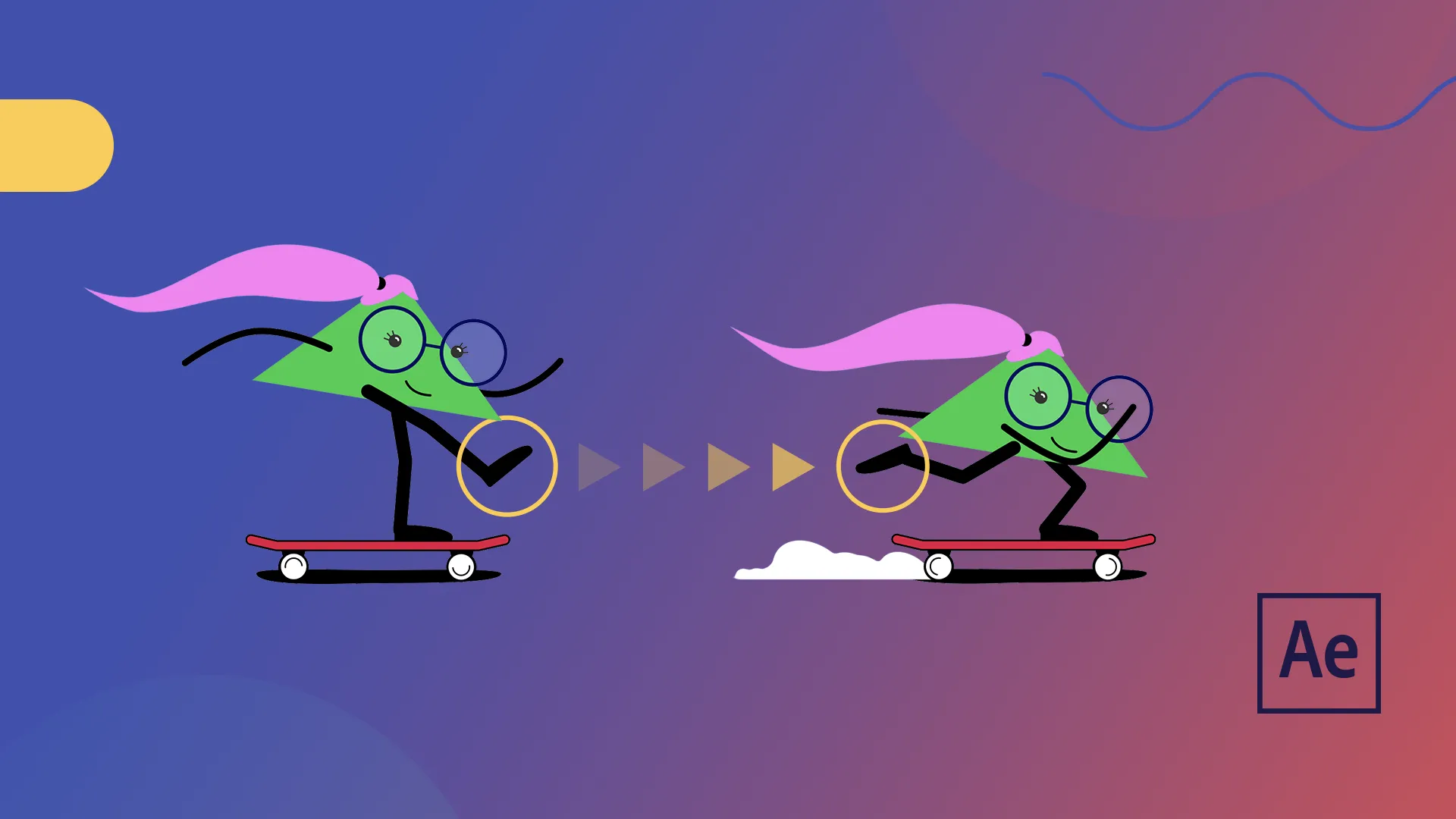Queue your audience's expectations with the animation principle, anticipation.
We teamed up with the very talented Jacob Richardson to bring you a hot new quick tip covering anticipation, one of the "12 Principles of Animation."
Mimicking life-like movements and fulfilling the expectations of our fickle brains can be tough. Using techniques like anticipation can greatly enhance your animations, and can quickly start to separate your work from beginner work.
Conceptually understanding anticipation isn't difficult, but knowing how much may be more of a challenge. After watching the super cool anticipation tutorial, make sure to download the free After Effects project file and read up on anticipation.
Less talky, more showy. Let's get this show on the road!
After Effects Anticipation Tutorial
Here's the tutorial! We hope you love it!
{{lead-magnet}}
What is Anticipation?
Anticipation is using a change of state to prepare for an action. And it helps to communicate what comes next. Winding up, squishing before hopping, and pulling back before a punch are just a few commonly cited examples.
In a very relatable example, let's take a look at what it can take to animate a hammer. When attempting to animate swinging a hammer, have it pull back before delivering that sturdy blow. The audience gets queued with the familiar motion of pulling back, and then expects, or anticipates, that the hammer is going to strike.

Swinging the hammer straight from point A to point B would only need a few frames. So, to help the viewer understand what is taking place, lead them. If you're looking to clearly communicate an action, and engage where the audience should be watching, queue their anticipation and set an expectation.
Why Should I Use Anticipation?
Early in your motion design journey, you set out to make an object move from one point to another point. Gaining this ability is just the beginning of your journey, and there is much more you can do to master movement and engage your audience.
As an artist you're always trying to communicate through your artwork! But how you communicate will vary and the tool you use will need to be appropriately chosen to suit.
Like eye-tracing, anticipation is a great way to help the viewer know where to look. What to expect is going to depend on the following action. Magically, without words, using anticipation helps you explain what is going to happen and can increase how much your audience will retain. Abrupt and unexpected movements may leave the viewer attempting to decode what just happened.
When you lay out a solid foundation, and understand anticipation, start bending the rules and use the common expectation to your advantage. Bring an element of surprise to your animation by doing the exact opposite of what's expected, like in this video!
And just for fun, here is more un-anticipated behavior that hopefully can drive this principle home.
Ready to Learn More About Animation?
Are you ready to take your animation skills to the next level? Check out Animation Bootcamp. Animation Bootcamp is one of our most popular courses, and for a good reason. It has helped transform motion design careers across the globe. You'll have the chance to learn the principles of animation alongside hundreds of other students.
If you're ready to dig deep, and take on a challenge, head on over to our courses page to find out more!
ENROLL NOW!
Acidbite ➔
50% off everything

ActionVFX ➔
30% off all plans and credit packs - starts 11/26

Adobe ➔
50% off all apps and plans through 11/29

aescripts ➔
25% off everything through 12/6
Affinity ➔
50% off all products

Battleaxe ➔
30% off from 11/29-12/7
Boom Library ➔
30% off Boom One, their 48,000+ file audio library
BorisFX ➔
25% off everything, 11/25-12/1

Cavalry ➔
33% off pro subscriptions (11/29 - 12/4)

FXFactory ➔
25% off with code BLACKFRIDAY until 12/3

Goodboyninja ➔
20% off everything

Happy Editing ➔
50% off with code BLACKFRIDAY

Huion ➔
Up to 50% off affordable, high-quality pen display tablets

Insydium ➔
50% off through 12/4
JangaFX ➔
30% off an indie annual license
Kitbash 3D ➔
$200 off Cargo Pro, their entire library
Knights of the Editing Table ➔
Up to 20% off Premiere Pro Extensions
Maxon ➔
25% off Maxon One, ZBrush, & Redshift - Annual Subscriptions (11/29 - 12/8)
Mode Designs ➔
Deals on premium keyboards and accessories
Motion Array ➔
10% off the Everything plan
Motion Hatch ➔
Perfect Your Pricing Toolkit - 50% off (11/29 - 12/2)

MotionVFX ➔
30% off Design/CineStudio, and PPro Resolve packs with code: BW30

Rocket Lasso ➔
50% off all plug-ins (11/29 - 12/2)

Rokoko ➔
45% off the indie creator bundle with code: RKK_SchoolOfMotion (revenue must be under $100K a year)

Shapefest ➔
80% off a Shapefest Pro annual subscription for life (11/29 - 12/2)

The Pixel Lab ➔
30% off everything
Toolfarm ➔
Various plugins and tools on sale

True Grit Texture ➔
50-70% off (starts Wednesday, runs for about a week)

Vincent Schwenk ➔
50% discount with code RENDERSALE

Wacom ➔
Up to $120 off new tablets + deals on refurbished items



